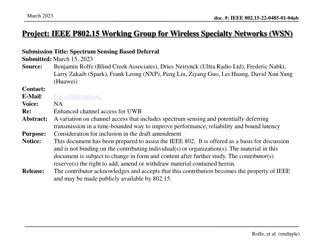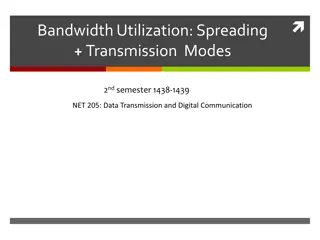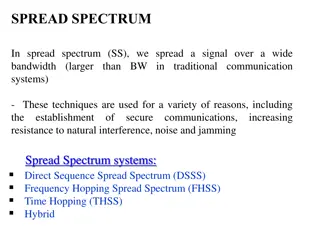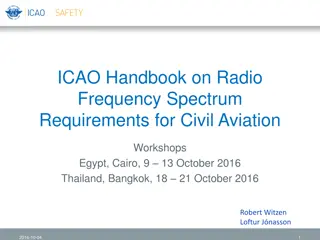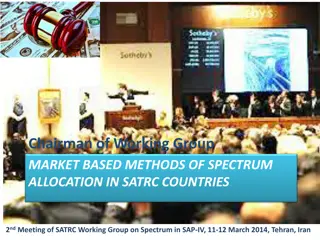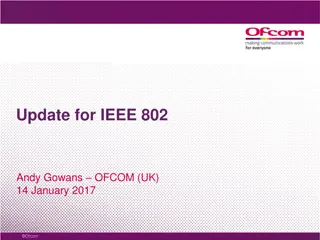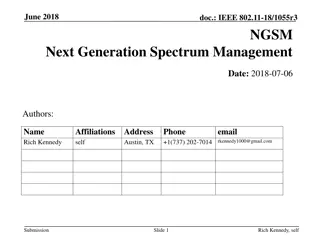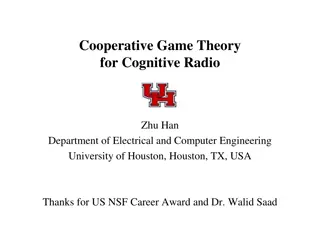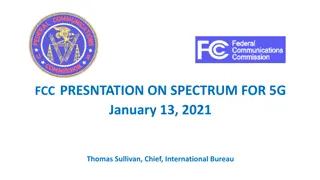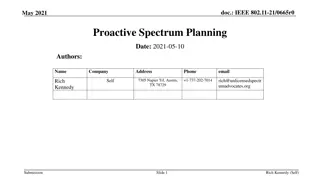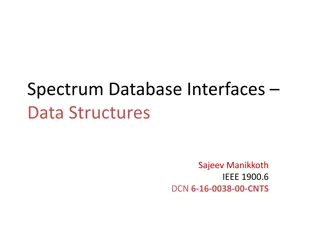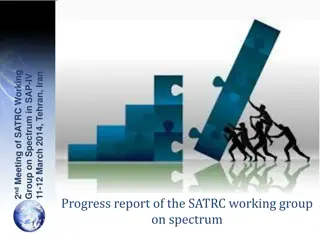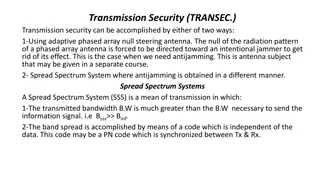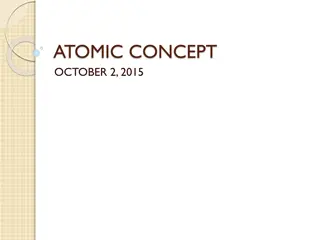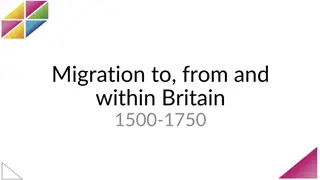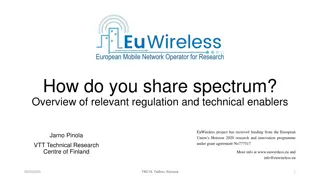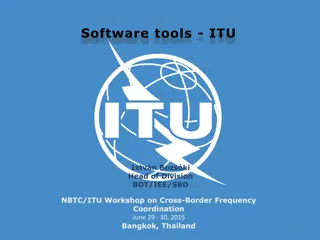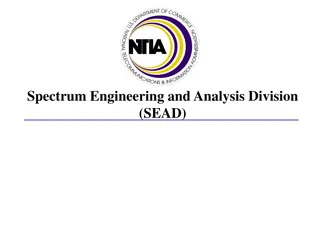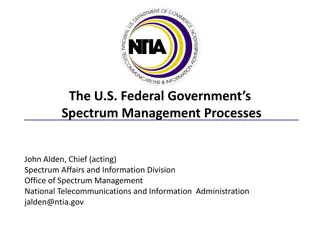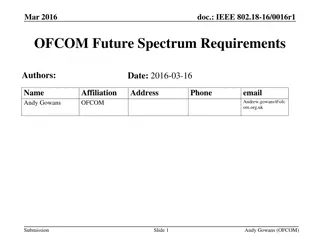The Future of Spectrum Airwaves
Deeper insights into the evolution of spectrum usage, regulatory challenges, and future needs. Delve into the complexities of spectrum allocation and the transition towards more efficient wireless networks.
Download Presentation

Please find below an Image/Link to download the presentation.
The content on the website is provided AS IS for your information and personal use only. It may not be sold, licensed, or shared on other websites without obtaining consent from the author.If you encounter any issues during the download, it is possible that the publisher has removed the file from their server.
You are allowed to download the files provided on this website for personal or commercial use, subject to the condition that they are used lawfully. All files are the property of their respective owners.
The content on the website is provided AS IS for your information and personal use only. It may not be sold, licensed, or shared on other websites without obtaining consent from the author.
E N D
Presentation Transcript
Spectrum Future(s): What do the airwaves foretell? THYAGA NANDAGOPAL THYAGA NANDAGOPAL DEPUTY DIVISION DIRECTOR DIRECTORATE OF COMPUTER & INFORMATION SCIENCE AND ENGINEERING NATIONAL SCIENCE FOUNDATION NATIONAL SCIENCE FOUNDATION
Disclaimer Any opinions, findings, and conclusions or recommendations expressed in this material are mine alone. These do not necessarily reflect the views of the National Science Foundation.
Spectrum use: a select (tinted) history 1934 Post- World War I Communications Act of 1934 2015 1994 Three-tier access system for 3.5 GHz CBRS band Self- Federal Spectrum Auctions start 1900s governed public broadcast Communications Commission (FCC) established Radio use on ships 1941 1945 1912 1927 2008 Frequency Scarcity Principle Radio Act of 1912 (first regulation of spectrum) Radio Act of 1927 TV White Space Re- allocation Radio frequency relocation Federal Radio Commission established (AM Station re- assigments, FM limits) Radio Licenses created
Common themes Spectrum is scarce Yet, more spectrum keeps becoming available over time ( technology enabled ) Moving spectrum users around is hard Yet, it happens when there is a desire to make it happen ( limited by economic and policy constraints ) Regulators are willing to try new methods of spectrum allocation Yet, it takes a lot of time to make it happen No harm principle requires data from studies No unbiased sources of data that regulators can rely on creates more uncertainty
Where we are today? Fixed frequency assignments (set largely many years/decades ago) Unlicensed spectrum bands (largely governed by Part 15 FCC rules) Shared use in 3.5 GHz Wired Communications Analogy: Dedicated circuits Ethernet On-demand shared circuits -circa 1993
Where do we need to be? Imagine data networks of today: Multi-homed end devices Switched Ethernet at the edge Carrier Aggregation for 400 Gbps Ethernet Interconnection agreements with multiple carriers What is the wireless equivalent?
A Spectrum Future Imagine: A set of unlicensed and unrestricted frequencies (spanning low-, mid- and high-bands) Devices that want to communicate can self-identify the desired swath of frequencies and power levels to get their data transmitted Self-aware networks learn on the fly Highly resilient
A future within realm of possibility DARPA Spectrum Collaboration Competition (SC2) Challenge Hinted at this being feasible with overall efficiency gains in many instances Self-awareness is the primary challenge needed for such a future Artificial Intelligence is key for realization What is needed: Flexible radios, compute in the radio, diverse waveform library Light-touch regulation, distributed consensus protocols Situational awareness and continual learning/inference
How to do it? Research, research and more research National Science Foundation, DoD, DARPA, and others Hundreds of millions of $ investments at play now National Science Foundation Programs Spectrum Innovation Initiative: National Center for Wireless Spectrum Research (SII-Center) Platforms for Advanced Wireless Research (PAWR) POWDER (Salt Lake City), COSMOS (New York City), AERPAW (Raleigh), Colosseum (Boston) National Radio Dynamic Zone Research programs in wireless
Conclusion Current spectrum allocation model is not working There is a clear need to innovate There are many futures possible, but creative thinking is the need of the hour. Artificial Intelligence and Data-driven learning/inference are helpful Leverage current R&D programs


